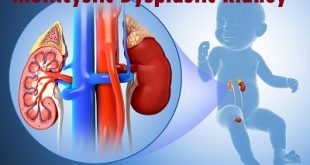Definition
Mirizzi syndrome is a rare condition caused by the compression of the common hepatic duct due to stones located in the cystic duct or the neck of the gallbladder, which causes obstruction of the extrahepatic biliary tract, what is most commonly presented as jaundice and upper abdominal pain. Mirizzi syndrome occurs approximately in 0.05-4% of patients undergiong cholecystectomy. Prolonged inflammation caused by the stones impacted in the cystic duct or the neck of the gallbladder may lead to advanced stages of Mirizzi syndrome and the formation of a cholecystocholedochal fistula or even a cholecystoenteric fistula. Diagnosis is made upon the symptoms, laboratory results and imaging techniques such as ultrasonography, computed tomography, magnetic resonance imaging or endoscopic retrograde choleangiopancreatography (ERCP), which is considered as the golden standard. However, the preoperative diagnosis is difficult and a large part of all cases is diagnosed intraoperatively. Management of Mirizzi syndrome is mostly surgical, but early stages of the syndrome can be treated with the use of ERCP.
Epidemiology
Mirizzi’s syndrome occurs in approximately 0.1% of patients with gallstones. It is found in 0.7 to 2.5 percent of cholecystectomies. It affects males and females equally, but tends to affect older people more often. There is no evidence of race having any bearing on the epidemiology.
Pathophysiology
The gallbladder consists of the fundus, body, infundibulum, and neck. The body extends from the fundus into the tapered portion, or neck. The neck usually forms a gentle curve, the convexity of which forms the infundibulum, or Hartmann’s pouch. The gallbladder is connected at its neck to the cystic duct which empties into the common bile duct. Large gallstones can become impacted in the cystic duct or the infundibulum. These stones can produce common hepatic duct obstruction by mechanical obstruction of the hepatic duct because of the proximity of the cystic duct and the common hepatic duct, and secondary inflammation with frequent episodes of cholangitis. In rare cases, chronic inflammation may result in bile duct wall necrosis and erosion of the anterior or lateral wall of the common bile duct by impacted stones leading to cholecystobiliary (cholecystohepatic or cholecystocholedochal) fistula.
Types of Mirizzi syndrome
There are two classifications that are usually used to clarify the variants of Mirizzi syndrome and to aid in choosing the appropriate therapeutic procedure:
The original classification by McSherry described two types of Mirizzi syndrome:
Type I – Compression of the common hepatic duct or common bile duct by a stone impacted in the cystic duct or Hartmann’s pouch.
Type II – Erosion of the calculus from the cystic duct into the common hepatic duct or common bile duct, producing a cholecystocholedochal fistula.
A more useful classification system also takes into account the presence and extent of a cholecystobiliary (cholecystohepatic or cholecystocholedochal) fistula, also known as a biliobiliary fistula, due to erosion of the anterior or lateral wall of the common bile duct by impacted stones:
- Type I – External compression of the common hepatic duct due to a stone impacted at the neck of the gallbladder or at the cystic duct.
- Type II – The fistula involves less than one-third of the circumference of the common bile duct.
- Type III – Involvement of between one-third and two-thirds of the circumference of the common bile duct.
- Type IV – Destruction of the entire wall of the common bile duct
Risk factors
- A cystic duct with low insertion into the common bile duct has been described as a risk factor for Mirizzi Syndrome.
- A tortuous cystic duct is also thought to be a risk factor.
Causes of Mirizzi syndrome
- Gallstones are usually formed from bile that is in stasis. When bile is not fully emptied from the gallbladder, it can precipitate as sludge and subsequently turn into stones.
- Biliary obstruction may also lead to gallstones, including bile duct strictures and cancers, such as pancreatic cancer.
- The most common cause of cholelithiasis is the precipitation of cholesterol that subsequently forms into cholesterol stones.
- The second form of gallstones is pigmented gallstones, which result from increased red blood cell destruction in the intravascular system causing increased concentrations of bilirubin, which subsequently get stored in the bile. These stones are typically black.
- The third type of gallstones is mixed pigmented stones, a combination of calcium substrates such as calcium carbonate or calcium phosphate, cholesterol, and bile.
- The fourth type is made up primarily of calcium and is usually found in patients with hypercalcemia.
- When multiple gallstones or a singular large gallstone get impacted in Hartman’s pouch (the lower outpouching of the gallbladder), external compression of the common bile duct or the common hepatic duct can occur.
- The exact mechanism as to why this occurs is unknown but appears to be related to a floppy Hartman’s pouch containing a higher mass of stones, such as with multiple stones or a single large impacted stone. This causes subsequent inflammation of the area, which can also lead to fistula formation over time.
Symptoms of Mirizzi syndrome
Mirizzi’s syndrome could be asymptomatic or non-specific. Common symptoms include:
- Constitutional symptoms including fever, nausea, vomiting, diarrhea and constipation
- Jaundice
- Right upper quadrant abdominal pain
- Symptoms of recurrent cholangitis
- Rarely, may present with symptoms of gallstone ileus
Complications
The most common complication of Mirizzi syndrome is cholecystobiliary or cholecysto-enteric fistula formation due to prolonged inflammation. Surgical complications with prolonged procedure time due to dense adhesions may also occur. These include bile duct injury and hemorrhage. Massive hemorrhage during dissection of the Calot triangle can occur in complex cases. Other complications of prolonged inflammation that can be seen in patients with Mirizzi syndrome include:
- Cutaneous fistula formation
- Secondary biliary cirrhosis
- Delayed onset biliary strictures
Diagnosis and test
Ultrasonography is a diagnostic imaging technique that uses sound waves to examine the internal organs in the body.
MRCP uses magnetic resonance imaging to view pancreatic and biliary ducts non-invasively and define the lesion before a surgery.
ERCP is used occasionally when it is required to relieve cholangitis with the help of an endoscopic stent when ultrasound is erroneous.
CT scan uses computer processed images to virtually view specific areas of the body.
Treatment and medications
Stent placement during ERCP may be temporary option prior to surgery but is not definitive therapy
- May obviate need for CBD exploration at surgery
Definitive treatment is surgical, with approach determined by type of Mirizzi syndrome
Type I: Partial or total cholecystectomy without CBD exploration
- Although laparoscopic resection is theoretically possible, high rate of conversion to open cholecystectomy
Type II: Subtotal cholecystectomy, surgical repair of fistula (suture repair, choledochoplasty), and exploration of CBD
Type III: Subtotal cholecystectomy or biliary reconstruction with biliary-enteric anastomosis
Type IV: Biliary reconstruction, usually Roux-en-Y hepaticojejunostomy
 Diseases Treatments Dictionary This is complete solution to read all diseases treatments Which covers Prevention, Causes, Symptoms, Medical Terms, Drugs, Prescription, Natural Remedies with cures and Treatments. Most of the common diseases were listed in names, split with categories.
Diseases Treatments Dictionary This is complete solution to read all diseases treatments Which covers Prevention, Causes, Symptoms, Medical Terms, Drugs, Prescription, Natural Remedies with cures and Treatments. Most of the common diseases were listed in names, split with categories.







